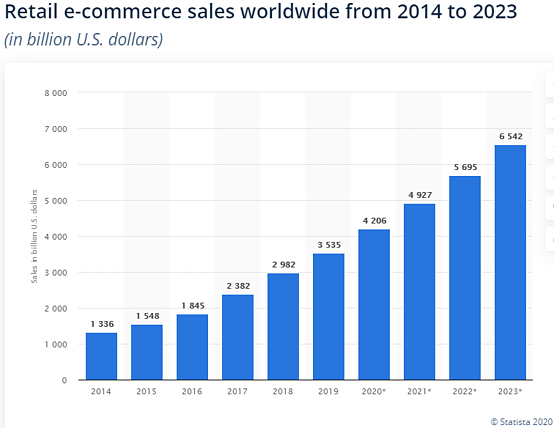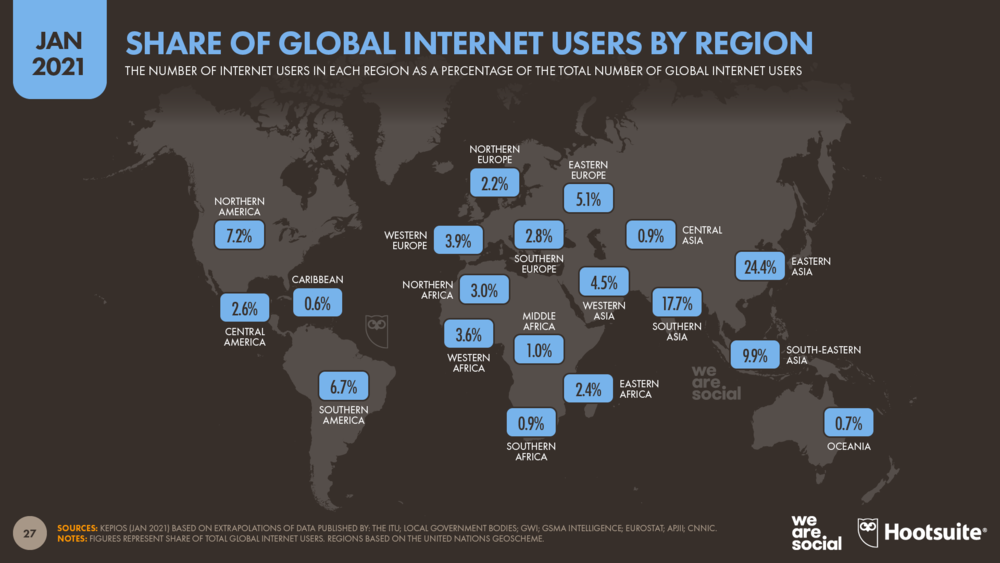Online shopping has finally made it everywhere: It’s become a given, just like paying a visit to the store in town – and people can do it in their pajamas. Which makes it even more personal... and that means a challenge.
Ecommerce has made it a reality: brands easily grow globally nowadays; but there's no "one fits all" approach to meet all customers' expectations and needs, wherever they live and what language they may speak. If your shopping experience is a uniform one across all channels, geographies and cultures, you'll be missing out on the chance to reach more international consumers.
Don't mistake uniformity for consistency (which is a must): language translation, localization and smart global content management remove barriers and enable you to engage more customers in new markets. Retail's ecommerce evolution has been accelerated at record speed since 2020 – based on equally impressive cornerstones:
Ecommerce's major milestones
Technically speaking, ecommerce became possible in 1991, when the internet was opened to commercial use. However, in its first usage, the term ecommerce referred to the process of executing basic electronic transactions via technologies such as Electronic Data Interchange (EDI) and Electronic Funds Transfer (EFT).
When public use of the World Wide Web became popular, ecommerce evolved to include the broader act of buying and selling consumer goods and services electronically. And just like that, the online shopping phenomenon was born:
- 1994 granted more public access, as online security protocols were developed (e.g., HTTP), and the first widely-used web browser, Netscape Navigator, launched.
- Just one year later, in 1995, eBay was founded, and even Amazon made its first sale.
- By 1996, over 40 million people had internet access at home, and online sales surpassed $1 billion for the year.
- In 1998, PayPal was founded, changing the way people make payments online.
- By the year 2000 – just four short years after surpassing the $1 billion mark – revenue from U.S. online shopping alone surpassed $25 billion.
- In the second quarter of 2020, the US Census Bureau of the DOC(Department of Commerce) observed that 16,1% of all retail sales in the US were ecommerce sales.
- Statista estimates that in 2023, retail ecommerce sales globally will amount to over 6.5 trillion US$, having reached almost 5 trillion US$ in 2021 (16.8% growth compared to 2020).

These numbers visualize the increasing importance of digital experiences, and how the growth of ecommerce (which is becoming m-commerce more and more) opens up new market segments like never before.
Clearly, one of the most important trends for retailers looking to stay ahead of the curve is personalization – for physical and digital experiences. And what’s more personal than speaking your customer’s language?
Retail, ecommerce, translation and localization – hand in hand
With the current state of the art in professional localization services, language is getting easier to navigate in the retail space. And it has become critical in terms of customers’ experiences. What matters more than ever before: since 2014, global online retail sales have more than tripled – and continue to grow.
The more people worldwide shop online, the more important it becomes to personalize information – especially for new audiences, often not as familiar with navigating the globe virtually. But in the end, it's true for almost all of us: To feel familiar and confident, customers want to search for, learn about and buy products and services not only in their native languages but with products, services and messaging fitting their cultural norms.
Conclusion: When devising your physical and digital retail growth strategy, remember that retail, translation and localization have a symbiotic relationship. The future of shopping, in any form, will be multilingual and intercultural.
Here are the four tips to get you started on your way to global ecommerce success:
1 - Seamlessly integrate your physical and digital experiences
From in-store to online, it's crucial that your brand remains consistent across markets and channels. Cater to cultural differences, and use a professional translation and localization vendor to ensure accurate, appropriate translations, localizing adequately your messaging.2 - Localize your product descriptions
What’s worse than missing product descriptions? Poorly translated ones! When consumers see oddities or even errors in product descriptions that appear in their native language, they easily start to question the trustworthiness of the product, service or brand. Professional, in-country linguists are vital.3 - Customize your marketing campaigns
Ensuring consistent brand messaging across global markets is crucial – your campaigns should be implemented in the local language, respecting cultural differences. Ask for a transcreation rather than just a marketing translation.
4 - Localize your ecommerce website and apps
Digitalization increasingly expands new customer possibilities, so we can’t over-emphasize the importance of ecommerce site localization to reach your multilingual and intercultural (potential) customer base. And with m-commerce on the rise, mobile app localization is just as important as a localized website.
Key takeaways
The above tips can help you to efficiently and intelligently manage global content and gain a competitive advantage in today’s fast-moving, digital economy. Localization helps to remove barriers, making it easier to enter new markets, to increase customer engagement and satisfaction, to strengthen global presence – and ultimately to increase revenue from all your channels.
The future of shopping is multilingual and intercultural. Is your retail business ready to go all-in digital?
Get our guide to a comprehensive retail restart in the era of full digital connectivity.
Read now


